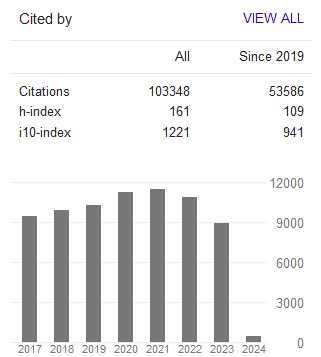Aspects of Procurement Reforms that Influence Expenditure Management in Public Secondary Schools in Kenya: A Focus on Emergency Procurement
- Eric Kibinu Kinuthia
- Paul Odundo
- Grace Nyagah
Abstract
The Kenyan public procurement sector has gone though colossal reforms, which were ignited by findings of country procurement assessment reports of 1986 and 1997; and hallmarked by formulation of the Procurement Regulations in 2001. This study aimed at establishing the extent to which public secondary schools in Nairobi City County had complied with relevant legislative provisions guiding procurement reforms, as well as the effect of selected aspects of reforms on expenditure management. The article focuses on one aspect of reforms, namely, frequency of emergency procurement. The evaluation research model III guided the research process and primary data were sourced in 2015 from 35 public secondary schools. Quantitative analysis included cross-tabulation with analysis of variance, chi-square statistic, correlation coefficient, as well as multiple regression. About two-thirds of the schools had developed procurement plans, as required by the legislative and policy provisions; while another two-thirds ‘occasionally’ practised emergency procurement. Besides, the frequency of emergency procurement significantly correlated with variation in procurement expenditure; and further caused a significant increment in procurement expenditure (beta weight = 0.457, t-statistic = 3.240 & ρ-value = 0.003), which signifies a negative influence on expenditure management. Limiting the frequency of emergency procurement is an important step towards effective expenditure management in public secondary schools.- Full Text:
 PDF
PDF
- DOI:10.5539/ijbm.v13n6p129
Journal Metrics
Google-based Impact Factor (2023): 0.86
h-index(2023): 152
i10-index(2023): 1168

Index
- Academic Journals Database
- AIDEA list (Italian Academy of Business Administration)
- ANVUR (Italian National Agency for the Evaluation of Universities and Research Institutes)
- Berkeley Library
- CNKI Scholar
- COPAC
- EBSCOhost
- Electronic Journals Library
- Elektronische Zeitschriftenbibliothek (EZB)
- EuroPub Database
- Excellence in Research for Australia (ERA)
- Genamics JournalSeek
- GETIT@YALE (Yale University Library)
- IBZ Online
- JournalTOCs
- Library and Archives Canada
- LOCKSS
- MIAR
- National Library of Australia
- Norwegian Centre for Research Data (NSD)
- PKP Open Archives Harvester
- Publons
- Qualis/CAPES
- RePEc
- ROAD
- Scilit
- SHERPA/RoMEO
- Standard Periodical Directory
- Universe Digital Library
- UoS Library
- WorldCat
- ZBW-German National Library of Economics
Contact
- Stephen LeeEditorial Assistant
- ijbm@ccsenet.org
